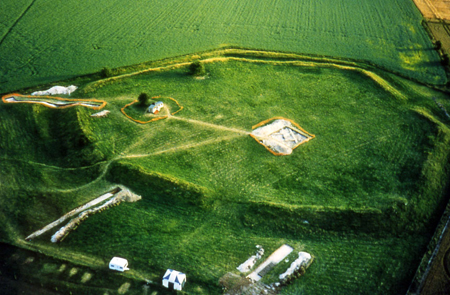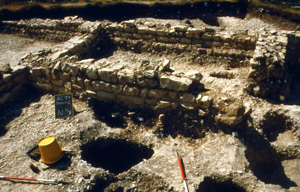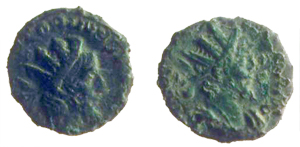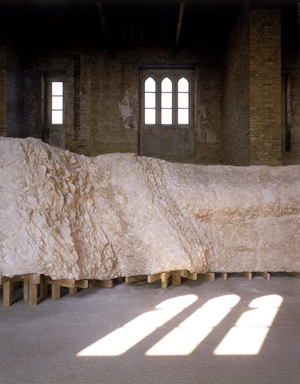Report Published on Excavations at Alfred's Castle
Between the years of 1994 and 2011 the Department, together with the School of Archaeology, University of Oxford, carried out important excavations within Oxfordshire. Many students enjoyed the peace and tranquility of this beautiful place and were also involved in revealing its long and complex history that spanned several thousand years from the early Bronze Age to the late Saxon periods.
The report of the excavations, Histories in the Making: Excavations at Alfred's Castle 1998-2000 is an Oxford University School of Archaeology Monograph and is available from Oxbow Books www.oxbowbooks.com/oxbow/histories-in-the-making.html

The report is co-authored by Professor Gary Lock (Director of Studies for Archaeology at the Department until his retirement in 2010, and co-director of the excavations at Albert's Castle.) The long period of post-excavation which was completed in 2013 has been due to the large number of finds and the complexity of the deposits within the site.
Alfred's Castle is a small Iron Age hillfort situated on the National Trust's Ashdown Estate just south of the Ridgeway and the village of Ashbury in Oxfordshire. The excavations were focussed on the Iron Age and Roman periods and provided training opportunities for Departmental Archaeology students on a range of courses, as well as for local and overseas volunteers.
 Alfred's Castle was excavated for 12 weeks spread out over the years 1998-2000. The long period of post-excavation has been due to the amount of material recovered and the complexity of the deposits within the site.
Alfred's Castle was excavated for 12 weeks spread out over the years 1998-2000. The long period of post-excavation has been due to the amount of material recovered and the complexity of the deposits within the site.
Alfred's Castle is a site of national importance for several reasons. Firstly the amount and quality of the material remains from the site make it one of the best assemblages of Iron Age material in England but, more importantly, the pottery typology has been tested against more than 30 radiocarbon dates. This correlation, unparalleled elsewhere in the region, has resulted in a new dating scheme for the early and middle Iron Age, 600-300 BC, which will be of importance to future excavations.
The excellent preservation of the deposits within the hillfort is due to its never having been ploughed; this has resulted in very large amounts of material especially pottery and animal bones. The conditions were also highly suitable for environmental sampling resulting in good evidence for crops and their processing.
 The other aspect of Alfred's Castle which makes it of national importance is the long chronological span of the site. There is evidence of Early Bronze Age round barrows (c. 1,800 BC), a series of Late Bronze Age linear ditches (c. 800 BC), the Iron Age enclosure (c. 500-200 BC), a Romano-British farmhouse (c. AD 100-300) and then Late Saxon activity (c. AD 10th-11th century). This is unusual and makes an important contribution to current debates about continuity of use and perceptions of the past in the past. The presence of the Roman occupation adds greatly to the amount of material remains excavated and processed and is itself important for being one of the earliest Roman settlements on this part of the chalk downs, established probably in the late 1st century AD.
The other aspect of Alfred's Castle which makes it of national importance is the long chronological span of the site. There is evidence of Early Bronze Age round barrows (c. 1,800 BC), a series of Late Bronze Age linear ditches (c. 800 BC), the Iron Age enclosure (c. 500-200 BC), a Romano-British farmhouse (c. AD 100-300) and then Late Saxon activity (c. AD 10th-11th century). This is unusual and makes an important contribution to current debates about continuity of use and perceptions of the past in the past. The presence of the Roman occupation adds greatly to the amount of material remains excavated and processed and is itself important for being one of the earliest Roman settlements on this part of the chalk downs, established probably in the late 1st century AD.
 An unusual element of the excavation was that artist in residence, Simon Callery, produced a life-size casting of one of the trenches which was then displayed in several galleries.
An unusual element of the excavation was that artist in residence, Simon Callery, produced a life-size casting of one of the trenches which was then displayed in several galleries.
The publication of the Albert's Castle report, as the last of the three in the series, also pulls together the evidence for the changing landscape for that area of the Berkshire Downs incorporating all of the known later prehistoric and Roman archaeology as well as these three sites. This will provide an invaluable reference for the archaeology of the area.
It was the third site excavated as part of the Hillforts of the Ridgeway Project, the other two being Uffington Castle and Segsbury Camp. (Reports of these excavations are also published.)
For more information on the Departments's courses in Archaeology, please see: www.conted.ox.ac.uk/archaeology
Published 13 May 2014
